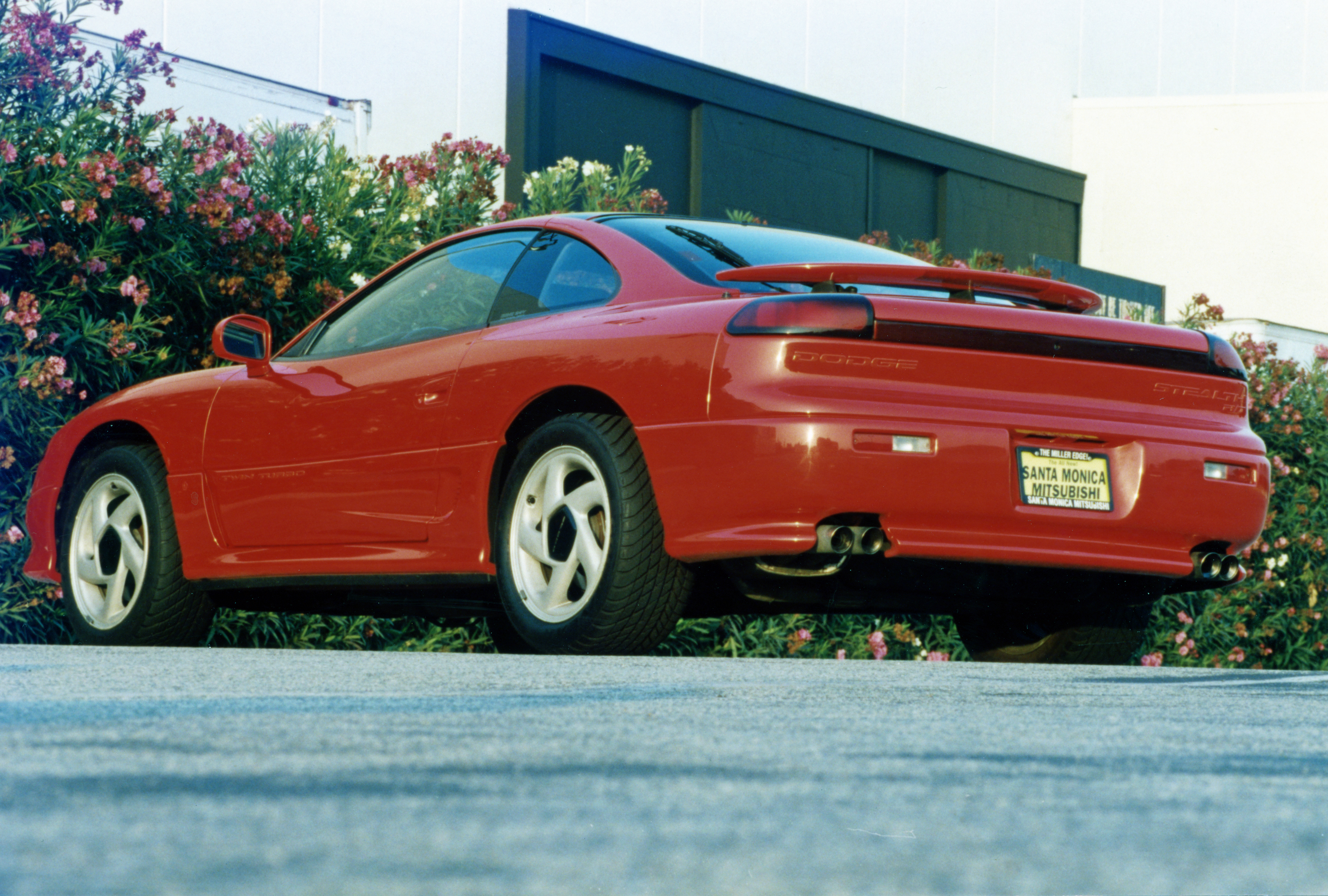
My 1991 Dodge Stealth R/T Twin Turbo made the perfect project vehicle while working at Super Street magazine
From 1992 to 1996 I drove two turbocharged Dodge’s as my primary transportation. They were both front-wheel-drive models with four-cylinder engines, and in the fall of 1996 I graduated to a new turbo Dodge with a tad more performance — a 1991 Dodge Stealth R/T Twin Turbo. I had loved the Dodge Stealth since it first debuted. The performance specs were impressive in the early 1990s: twin turbos, 300 horsepower, all-wheel drive and an adjustable suspension. Of course the Stealth was really just a re-bodied Mitsubishi 3000GT, and I liked both cars’ performance specs and loved their proportions. Even 27 years later I still think they look great.
I bought my 1991 Dodge Stealth R/T Twin Turbo from a used car dealer in Santa Monica. It had 58,000 miles and I paid $12,000. For a 5-year-old performance car with the Stealth’s technical specs I thought it was a pretty good deal. What I didn’t know at the time was that Stealth R/T Twin Turbo maintenance calls for a timing belt change around 55,000 miles. Mine hadn’t been done, and less than a week after buying it the belt let go and the pistons crashed into the valves, destroying the top of the engine.
As tragic as this could have been, in the week between buying the car and the timing belt letting go I purchased a factory Dodge warranty for the Stealth for $1,400. All that advanced technology scared the hell out of me. I wanted it covered, and thank god I didn’t dally on buying that warranty. It took the Santa Monica Dodge dealer about 2 months to get my Stealth back to me. In the process, they also replaced the clutch and went through the suspension. When I got it back it felt like a new car. The bill was around $2,000 because clutch and suspension work wasn’t covered by the warranty, but the $1,400 warranty saved me an easy $4,000 in parts and labor to rebuild the Stealth R/T Twin Turbo’s engine.
Over the next 2 years, I drove the Stealth nearly every day and modified it with upgrades from the HKS catalog. I was working at Super Street magazine at the time and did stories on all the upgrades. The Stealth had a boost controller, blow-off valve, and a couple of other things I honestly can’t remember. It was all going well until I added a nitrous kit. I only used the nitrous a few times on the street. But when I took the Stealth R/T Twin Turbo to an import race event at Famoso Dragstrip, near Bakersfield, in May of 1998 I was running the nitrous and blew a piston ring.
Once again the warranty was utilized to rebuild the engine. This time it took about 6 months to get the Stealth back, by which time I had left Super Street magazine and was working at a consumer website, not an import tuner magazine. I had a new press car to drive every day, making the Stealth an unnecessary garage space hog and insurance cost. Within a few months of getting it back from the shop I sold it to a guy from Santa Fe, New Mexico. He flew out to LAX, I picked him up and we did the deal at a bank. He called me when he got back to Santa Fe singing the car’s praises in terms of performance and head-turning style. By then it had 18-inch Enkei wheels and Toyo tires that really made it sparkle.
I still consider that era Dodge Stealth R/T Twin Turbo (and its Mitsubishi 3000GT VR4 sibling) some of the best-looking supercars cars of the 1990s. Sadly, they were too heavy (about 4,000 pounds) and my fears proved correct — the potential ownership costs as all that technology ages are pretty scary…



Jennifer Gray
I pray Dodge will bring back the STEALTH as they have others. I have owned 92 & 94 Rttturbo’s.
Love these cars, easy 2 mod out & cant get better handling aws/awd & wide, low 2 the ground body.. I got compliments up till 2016 when I was T-boned & my beautiful Pearl white beauty was totalled.
I just finally replaced it in 2020 w/a Plum Crazy Purple Challenger Hellcat which is a beast,,, but I still search for Stealths. Thank you for respecting these 90’s sports machines.